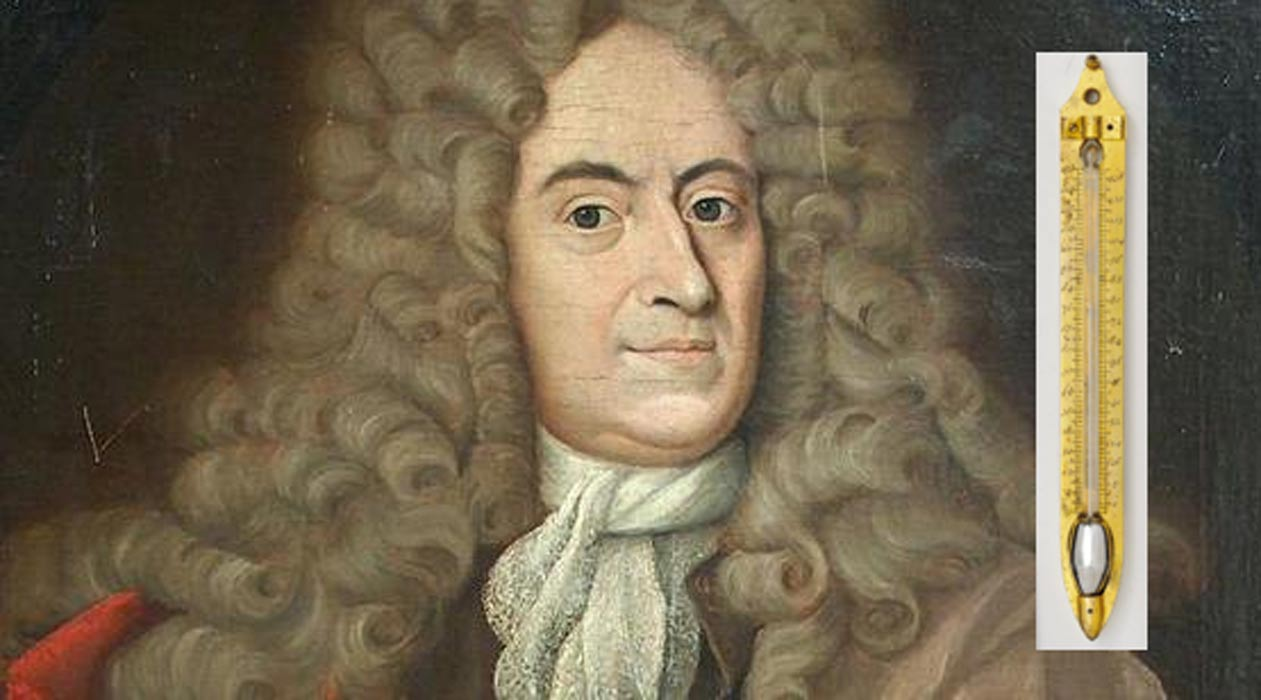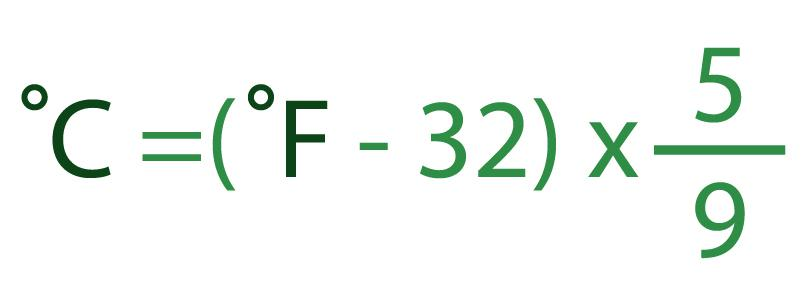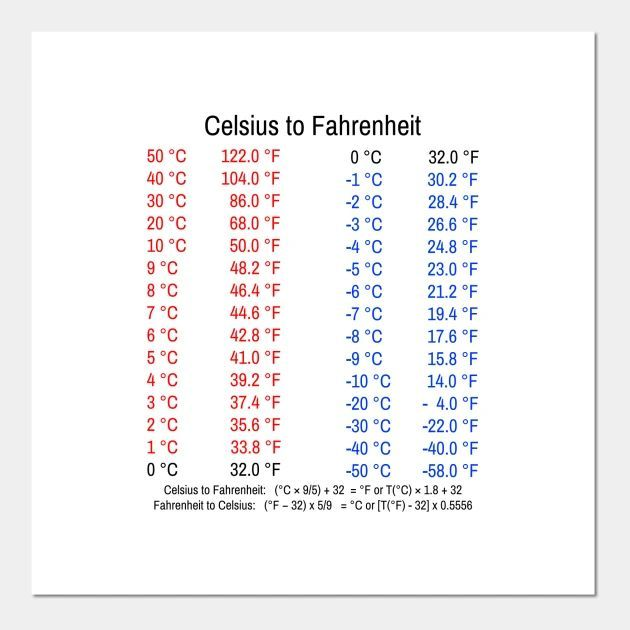- Fast Service
- Free Shipping
- Easy Ordering
How to Convert 50 Degree Fahrenheit to Celsius [Solved]
![How to Convert 50 Degree Fahrenheit to Celsius [Solved]](https://blog.certifiedmtp.com/wp-content/uploads/2024/04/50_degree_fahrenheit_to_celsius-1.jpg)
Need to convert 50 degree Fahrenheit to Celsius? The quick answer: “50 degree Fahrenheit to Celsius” is 10°C. Stick around as we break down the conversion formula, highlight easy-to-use tools, and offer tips to master temperature translations in your daily activities.
Key Takeaways
-
Converting 50 degree Fahrenheit to Celsius involves subtracting 32 from the Fahrenheit value (F) then multiplying by 5/9, resulting in 10 degrees Celsius.
-
While manual conversion is valuable, there are many online tools and mobile apps available for quick and accurate temperature conversions between Fahrenheit and Celsius.
-
Understanding temperature conversions is practically beneficial for interpreting weather forecasts, following cooking recipes, and adapting to different units while traveling.
Mastering the 50 Degree Fahrenheit to Celsius Conversion

Mastering the art of converting 50 degree fahrenheit to celsius is more than just a mathematical exercise. It’s a skill that touches many aspects of our lives, from interpreting weather forecasts and following cooking recipes, to engaging in scientific work. The ability to convert between these two temperature scales is a bridge that connects us globally, facilitating effective communication and informed decision-making. Whether you’re a scientist, a weather enthusiast, or a home cook, understanding how to convert between Fahrenheit and Celsius is a skill that will serve you well.
With that in mind, let’s dive into the world of temperature conversion by taking a closer look at the celsius and fahrenheit scales, two of the most widely used temperature scales worldwide.
The Fahrenheit Scale
Born in the 18th century, the Fahrenheit scale is the brainchild of German physicist Daniel Gabriel Fahrenheit. This temperature scale sets the freezing point of water at 32 degrees and the boiling point at 212 degrees, with the interval between these two points divided into 180 parts. The zero of the Fahrenheit scale was initially based on the temperature of an ice-salt mixture, which was later revised. This scale might seem a bit odd to those accustomed to the Celsius scale, yet it continues to be used for everyday applications in the United States and a few other countries.
Understanding the Fahrenheit scale is crucial for anyone dealing with temperature measurements in Fahrenheit, especially when it comes to converting to Celsius. But before we dive into conversion, let’s take a closer look at its counterpart, the Celsius scale.
The Celsius Scale
The Celsius scale, also known as the centigrade scale, was invented in 1742 by Swedish astronomer Anders Celsius. Initially, the scale was designed with 100 degrees as the freezing point and 0 degrees as the boiling point of water. However, after Celsius’s death, this scale was reversed to the ascending scale we use today.
The simplicity and intuitive nature of the Celsius scale, characterized by a 100-degree interval between the freezing point (0 degrees) and the boiling point (100 degrees) of water, led to its widespread adoption for scientific purposes and in most countries around the world.
Now that we have a basic understanding of both the Fahrenheit and Celsius scales, let’s see how they interact when it comes to converting 50 degrees Fahrenheit to Celsius.
Converting 50 Degree Fahrenheit to Celsius

So, how do we convert 50 degree Fahrenheit to Celsius? The answer lies in a simple formula: C = (F – 32) * 5/9, where F is the temperature in Fahrenheit and C is the temperature in Celsius. Let’s unpack this formula and apply it.
The Conversion Formula
At first glance, the formula for converting Fahrenheit to Celsius, C = 5/9 x (F – 32), might seem a bit daunting, but it’s quite straightforward once you break it down. In this formula, C represents the temperature in Celsius, and F represents the temperature in Fahrenheit. Essentially, what this formula is telling us is that to convert a temperature from Fahrenheit to Celsius, you subtract 32 from the Fahrenheit temperature and then multiply the result by 5/9. Similarly, the process of converting Celsius to Fahrenheit follows a different formula, which is essential when you need to convert Celsius to Fahrenheit.
This formula to convert is the backbone of the conversion process and is indispensable for applications such as understanding weather conditions, cooking, or conducting science experiments. Let’s test the formula by converting 50 degrees Fahrenheit to Celsius. Are you ready?
Applying the Formula
Let’s get started with our conversion. The first step is to subtract 32 from the Fahrenheit temperature, which, in our case, is 50. So, 50 minus 32 gives us 18. This is how we convert 50 degree Fahrenheit to Celsius.
The next step is to multiply the result by 5. So, 18 times 5 gives us 90.
The final step is to divide this product by 9 to get our Celsius temperature. So, 90 divided by 9 gives us 10. Voila! We have successfully converted 50 degrees Fahrenheit to 10 degrees Celsius using our conversion formula!
Online Tools for Temperature Conversion
While mastering the manual conversion is a valuable skill, it’s also handy to know that there are many online tools available that can do the heavy lifting for you. Whether you’re on a desktop or mobile, these tools can easily convert Fahrenheit to Celsius and vice versa in a matter of seconds. Some popular online conversion tools include:
-
Convertworld
-
RapidTables
-
UnitConverters
-
OnlineConversion
Using these tools can save you time and ensure accurate conversions.
Let’s take a closer look at these online tools.
Web-based Converters
Web-based temperature converters are a quick and easy solution for temperature conversion. These tools are easily accessible with a simple internet search. They typically allow you to input a temperature in Fahrenheit and instantly provide the corresponding Celsius value. This quick conversion is especially handy when you’re dealing with temperatures in unfamiliar units.
Mobile Apps
In our tech-driven world, why not use our smartphones for temperature conversions? Apps such as ‘Fast Temperature Converter Pro’ for iOS users provide swift conversions between Celsius, Fahrenheit, and other temperature units. Moreover, many weather-related apps can automatically convert temperatures between Fahrenheit and Celsius according to your preferences. These apps are a convenient tool for travelers or anyone who needs to quickly switch between temperature scales.
Fahrenheit to Celsius Conversion Table

While formulas and online tools are great, the good old conversion table is a handy resource when you need to convert a range of temperatures from Fahrenheit to Celsius. Conversion tables are especially useful when you don’t have access to a calculator or the internet.
Let’s explore how to read these tables and some common temperature conversions.
Reading the Table
Reading a conversion table is quite straightforward. You locate the known temperature value, such as Fahrenheit, along one axis of the table. Then, you simply follow the corresponding row or column to find the intersection point with the Celsius value on the opposite axis. It’s important to note that the orientation of the table can vary, so it’s crucial to follow the correct row or column to the conversion value.
Common Temperature Conversions
In our day-to-day lives, we often encounter the need to convert certain temperatures from Fahrenheit to Celsius or vice versa. For instance, at -40 degrees, both Fahrenheit and Celsius scales read the same, marking a unique intersection point where Celsius is equal to Fahrenheit. Key conversion points include the freezing point of water, body temperature, and the boiling point of water.
Other common conversions include room temperature, refrigerator temperature, and a hot summer day. Familiarizing yourself with these common conversions can greatly enhance your quick mental estimation skills.
Moreover, knowing simple temperature equivalents can be quite handy. Here are some examples:
-
0°C equals 32°F
-
10°C equals 50°F
-
20°C equals 68°F
-
-5°C equals 23°F
-
5°C equals 41°F
-
15°C equals 59°F
These temperature equivalents can help you estimate equal temperatures quickly and easily.
Real-life Examples of Temperature Conversion
Just to give you an idea of how temperature conversions permeate our lives, let’s take a look at some real-life examples. Whether it’s science, cooking, or travel, an understanding of temperature conversion can make a world of difference.
Weather Forecasts
Every day, we check the weather to decide what to wear, when to go for a run, or even when to water our plants. But did you know that the ability to convert between Fahrenheit and Celsius is vital for interpreting these weather forecasts? Especially for international travelers or professionals working with data from countries that use Fahrenheit, understanding these conversions is crucial to comprehend local weather conditions.
In emergency situations, the ability to accurately understand the severity of weather forecasts can be critically important for safety and comfort.
Cooking and Baking
Whether you’re a culinary enthusiast or just someone who loves to bake, understanding temperature conversion is a must. When following international recipes that use different temperature units, precise measurements are vital. For instance, oven temperature controls may display Celsius in the UK while showing Fahrenheit in North America, making conversion essential for recipes from different regions.
Remember, accuracy in converted oven temperatures can ensure the desired outcome and prevent a culinary disaster!
Travel
Traveling is all about adapting – to new cultures, cuisines, and even temperature scales! When visiting countries that use different temperature scales, travelers must be able to convert temperatures to adapt to weather conditions and climate differences. Knowing how to convert temperatures is essential when renting cars or using appliances abroad that display temperature settings in a different scale.
Even something as simple as adjusting the temperature controls in a rented car can become a challenge if you’re not familiar with the temperature scale used.
Tips for Quick and Accurate Conversions
While understanding the conversion formula is important, sometimes you need a quick estimation more than an exact conversion. That’s where estimation methods come in handy. They can provide you with a rough temperature conversion when you don’t have access to a calculator or the internet.
Mental Math Tricks
For a quick estimation from Fahrenheit to Celsius, you can use a simple mental math trick. Start by subtracting 30 from the Fahrenheit temperature, which simplifies the accurate formula of subtracting 32. Then, divide the result by 2 to get a rough estimate of the Celsius temperature. This mental trick can give you a quick estimation, especially when an exact conversion is not necessary.
Estimation Methods
Estimation methods are also useful when converting a Celsius temperature to Fahrenheit. In this case, you can double the Celsius value, subtract 10% from it, and then add 32 to this adjusted number for a closer approximation.
These estimations are particularly useful for quick mental calculations or when precision is not necessary.
Summary
We’ve journeyed through the world of temperature conversion, exploring the Fahrenheit and Celsius scales, the conversion formula, and the applications of temperature conversion in daily life. Whether it’s checking the weather, baking a cake, or adjusting the thermostat in a foreign country, temperature conversion is a skill that touches many aspects of our lives. So the next time you encounter a temperature in a foreign scale, remember the formula, use an online tool, or refer to a conversion table. And who knows? You might just save the day with your newfound temperature conversion skills!
Certified MTP has numerous options for the thermometers, including Digital Thermometers, Mercury Free Thermometers, and Digital Infrared Thermometers.
Frequently Asked Questions
How do you convert 50 degree Fahrenheit to Celsius easily?
To convert 50 degree Fahrenheit to Celsius easily, use the formula: °F = (°C × 1.8) + 32. For example, to convert 20°C to Fahrenheit, multiply 20 by 1.8, which is 36, then add 32 to get 68°F.
What is greater 50 C or 50 F?
50°C is greater than 50°F because in the Kelvin scale, 50°C is equivalent to 323K while 50°F is equivalent to 283K. This means that 50°C is higher than 50°F.
What is the 50 F on the Celsius scale?
50 degrees Fahrenheit is equivalent to 10 degrees Celsius, and this is what has been discovered when we convert 50 degree fahrenheit to celsius.
Is 50 degrees Fahrenheit cold?
Yes, 50 degrees Fahrenheit is considered cold, but with the right clothing, you can still stay comfortable. Consider adding layers and possibly tights for warmth.
Are there online tools that can convert temperatures?
Yes, there are plenty of web-based tools and mobile apps that can convert temperatures between Fahrenheit and Celsius.
Related Blogs for 50 Degree Fahrenheit to Celsius:
Precision ASTM Thermometers: Certification and Specification
Thermometers with Mercury: Everything You Need to Know
How to Convert 65 Degrees C to F>
Role of Thermometers in Concrete Curing
How to Convert 70 Deg F to C Easily
How to Convert 158 Fahrenheit to Celsius (158 F to C)
Lab Grade Thermometer for Concrete Testing
Certified Thermometers for Material Testing
Comprehensive List of Biology Laboratory Equipment in 2023
Thermometers Calibrated: Calibrate for Accurate Readings
Convert 900 Degrees Fahrenheit to Celsius (900 F to C)
Master C to F Formula: How to Convert Celsius to Fahrenheit
Digital Humidity and Temperature Meter: Discover the Best
7 Fahrenheit to Celsius: Quick Temperature Conversion Guide
75 Fahrenheit to Celsius Converter: Easy Conversion Method
Easy Guide: Convert 69 Fahrenheit to Celsius Effortlessly
67 F to C: Accurate Fahrenheit to Celsius Conversion Guide
Convert 99.4 F to C: Fahrenheit to Celsius Conversion
Easy K to F Conversion: Your Guide to Kelvin to Fahrenheit
Quick 35 f to c Conversion: Convert Fahrenheit to Celsius
Easy 0 F to C Conversion: Turn Fahrenheit into Celsius Fast
60 Degrees C to F: Quick Conversion Guide
32 Celsius to Fahrenheit: Easy Temperature Conversion Guide
How to Convert 79 Degrees F to C Easily [Conversion Solved]
Temperature Conversions Table: Fahrenheit to Celsius
Celsius to Kelvin: Guide to Accurate Temperature Conversion
Quick and Easy Celsius Calculator for Temperature Conversion
Fahrenheit to Rankine Formula: Steps for Temp Conversion
Rankine to Celsius Conversion: Your Complete R to C Guide
Is Mercury Illegal to Own? Understanding Regulations
Degrees in Radians: A Guide for Converting Angles
Discover the Best Type of Thermometers for Accurate Readings
Mercury Thermometer: Safe Usage and Disposal Tips
Accurate and Reliable Glass Thermometer Selection Guide
Quickly Convert 120 C to F Accurately [Conversion Solved]
78F C Conversion Guide: Easily Convert Fahrenheit to Celsius
Mercury Thermometers: Safe Disposal Guidelines
Easily Convert 37 C to F with Simple Steps
What is the Boiling Point of Water in Celsius: A Clear Guide
